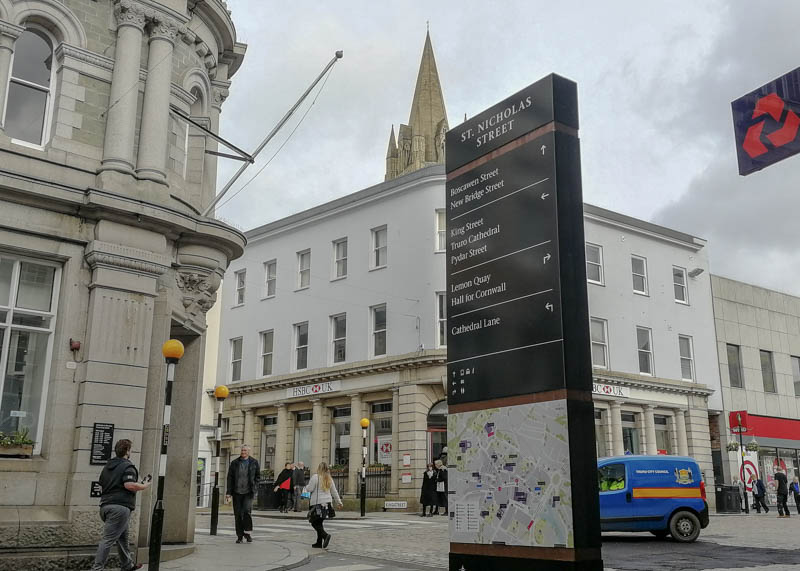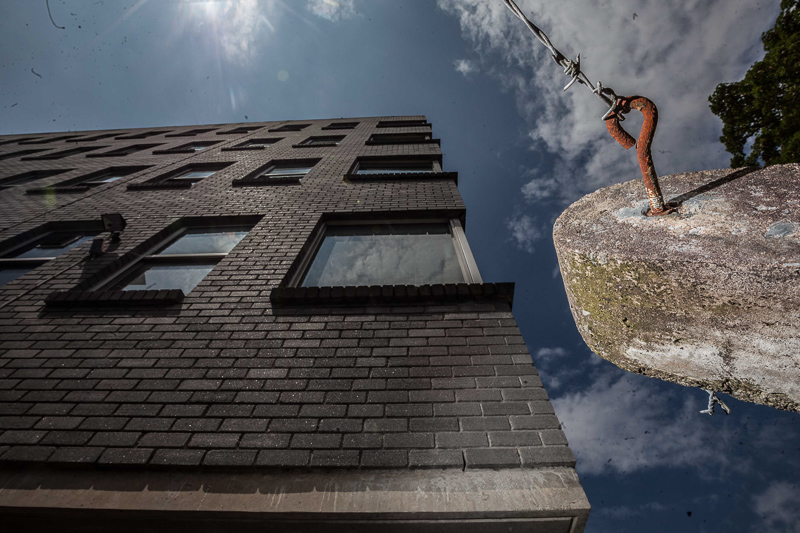Planning Issues Oct 2019
Higher Newham Farm
No doubt what the two key issues are this month! Higher Newham Farm has returned to the agenda. The applicant persists in the folly of seeking consent to create an access for the development of this excellent farmland for housing from Truro by-pass (misleadingly dubbed ‘Morlaix Avenue’ ), which is also the A39 and A390 – a twin ‘A’ road which was, until the early 2000s one of Cornwall’s three Trunk’ routes – rudely and stupidly downgraded as an austerity measure by the Highways Agency; no longer a ‘Trunk’ by name or designation, but most definitely a ‘trunk’ by function and by usage. I remain as opposed as I was when this notion first passed over the desks of planners and highways engineers, when I held it up for two out of three meetings of the Strategic Planning Committee.
What is proposed is a development of 87 houses to sit on the crest of the hill opposite the Calenick AONB. I have consistently advanced to view that access should be gained, if consent is granted, via Higher Newham Lane, which is the traditional entrance to the farm. It is privately owned and would need some improvement, as well as a pedestrian crossing (much needed) across Newham Road, but these are minor expenses compared with creating an access to a double-A’ Road which plays such a primary role in the traffic management scheme for Truro.
Higher Newham Lane would also afford much better pedestrian access, especially using the Riverside Walk, and give residents direct access both to Tesco’s and the town centre.
The second aspect of this scheme which is controversial is the insistence on building atop the hill. I know of no settlement anywhere in Cornwall which is built on top of a hill! Certainly, nothing in the vicinity of the Fal Estuary comes to mind. However, when I met a representative of the owners some time ago I suggested that they should focus on creating a riverside village, with landing facilities, accessed via Newham Road, using traditional designs to create the requisite number of units but without making an assertive footprint on the landscape. I also think this would be much more sheltered and pleasant and would be attractive, and quite possibly, if well-designed, could complement the AONB.
The current proposals are garish and strident, imposingly indiscreet. With a five-year land supply Cornwall is in a better position than previously to shape and direct – and I think this is a sufficiently sensitive site, including best quality agri-land, to argue for discretion and constraints.
2. Langarth:
There is a major consultation going on around proposals for an environmental impact assessment. There are many aspects to this – archaeological, drainage, bio-diversity, air quality – the range is holistic. Looking at the various subject areas it is clear that trying to construct a major settlement on high moorland which is also good quality agricultural land, which sits in the main drainage catchment of the River Kenwyn, is not simply a matter of aesthetics and mitigation. It is primarily a matter of risk and whether, in the long run, the risks are worth it, because the consequences could be serious and chronic.
Of course, apart from the possibility of damage to the integrity of the River Kenwyn, which is the lifeblood of Truro, and a source for the future of potable water, irrigation, power, bio-diversity and navigation, flowing as it does into the Fal Estuary, the most protected estuary in Europe, there is the question of flood management – will the dam inserted in the late 1980s to capture land drainage in times of high tide and heavy rainfall be sufficient to hold back the run-off from up to 4000 houses. I have often raised the matter of why such a development does not occasion a new Sewage Treatment Works, and we remain dissatisfied by explanations proffered from time to time by the South West Water Co. Ltd. Now, the volumes of water which would be generated must also be seen as a clear risk to a town whose centre mostly lies at sea level. I’m not sure that can be a cost-effective mitigation sufficient to critically limit the risk – therefore, value and practicability become key questions.
3. Resurfacing in town centre
Recently, we have seen significant work in secondary streets in the vicinity of the Cathedral which means they are now properly resurfaced. This is a major investment and will last for years to come. Work is ongoing in Boscawen Street and Lower Lemon Street – this is work which must be done, and I’m glad to report that the Head of Network, Kevin Bryant is committed to the wise course of working to very high standards. Work will be going on for some time yet, with breaks for Christmas (and Remembrance Sunday).
4. The Crescent
A particularly difficult planning battle was fought over proposals to construct extra dwellings over garages to the rear of a new development at The Crescent. Following a very strong campaign by residents, and with a strong decision from the Planning Committee, the Appeal Decision letter has upheld the refusal. This a a good result for the Conservation Area and strengthens the hand of those who seek to curb intrusive over-development
5. Community hub
One of the empty shops at the bottom of the Pydar Street site is being used as a community resource. It is attracting quite a lot of enquiries.
6. Truro Day Centre and devolution
Truro City Council has won approval for the devolution of the Truro Day Centre in St Clement Street. This means that, with some refurbishment and fitting out, it will become a community facility. The estate transferred to Truro City Council in the past couple of years is quite significant – it includes the Library (opened under TCC management on 1st October), public toilets, Hendra Sports Hall, Zebs, Coosebean Woods, and land at Beechwood Park. We are expecting other assets in the near future. The announcement about the Day Centre is due soon.
7. Patrick Taylor
Lastly, I am very sad to report that Patrick Taylor has died. He succumbed to cancer two days ago. Patrick was brought up in Truro, son of John Taylor, the architect. He trained as an architect and then developed a valuable career as a conservation specialist. It was in this capacity that he generously offered to compile the materials for the Truro Local List. He had been working on this until he was diagnosed, when it was passed to Truro City Council. It is a copious piece of work which will contribute to protecting a significant layer of Truro’s built heritage when it is submitted alongside the Neighbourhood Plan next year. I have lost a good friend and Truro has lost a man of expertise, gentle dedication and tenacity, and one who genuinely dedicated himself to practical work which will enhance the town.
Bert Biscoe
23rd October 2019





